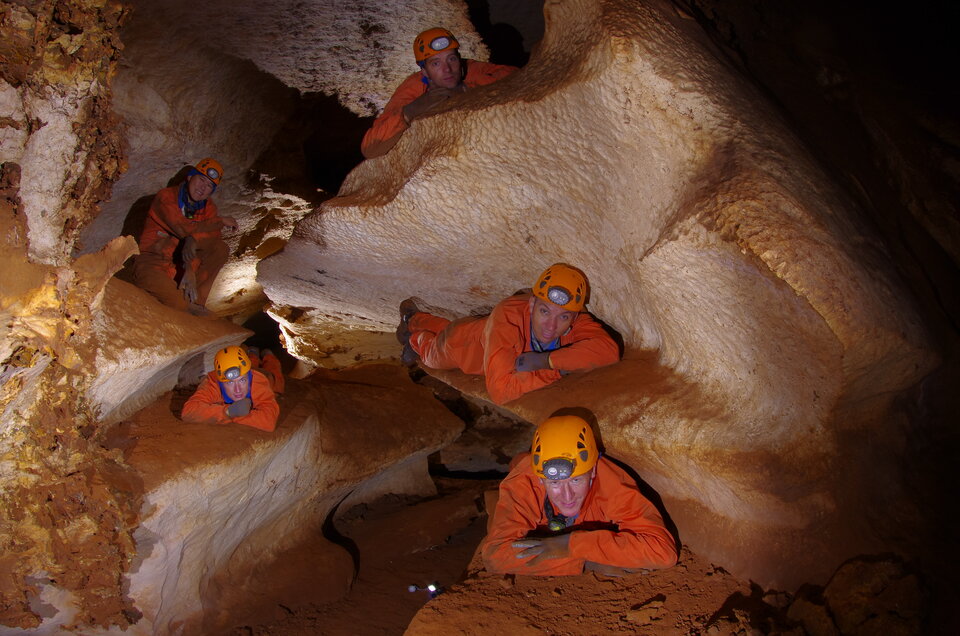Mission accomplished: cave crew returns to Earth
Take five astronauts and instead of sending them into space take them underground. ESA’s CAVES venture prepares astronauts to work in an international team under real exploration conditions. The latest ‘crew’ has returned after six days in the dark.
Sardinia is not only a popular Mediterranean holiday destination but also an excellent place for astronaut training. The island’s interior has isolated mountains and forest areas, rugged and savage.
ESA’s astronauts passed their survival training there, and two of them recently returned with American, Russian and Japanese colleagues.
For six days they lived and worked in the island’s complex cave systems – some of them unmapped or unexplored.
Space-like conditions

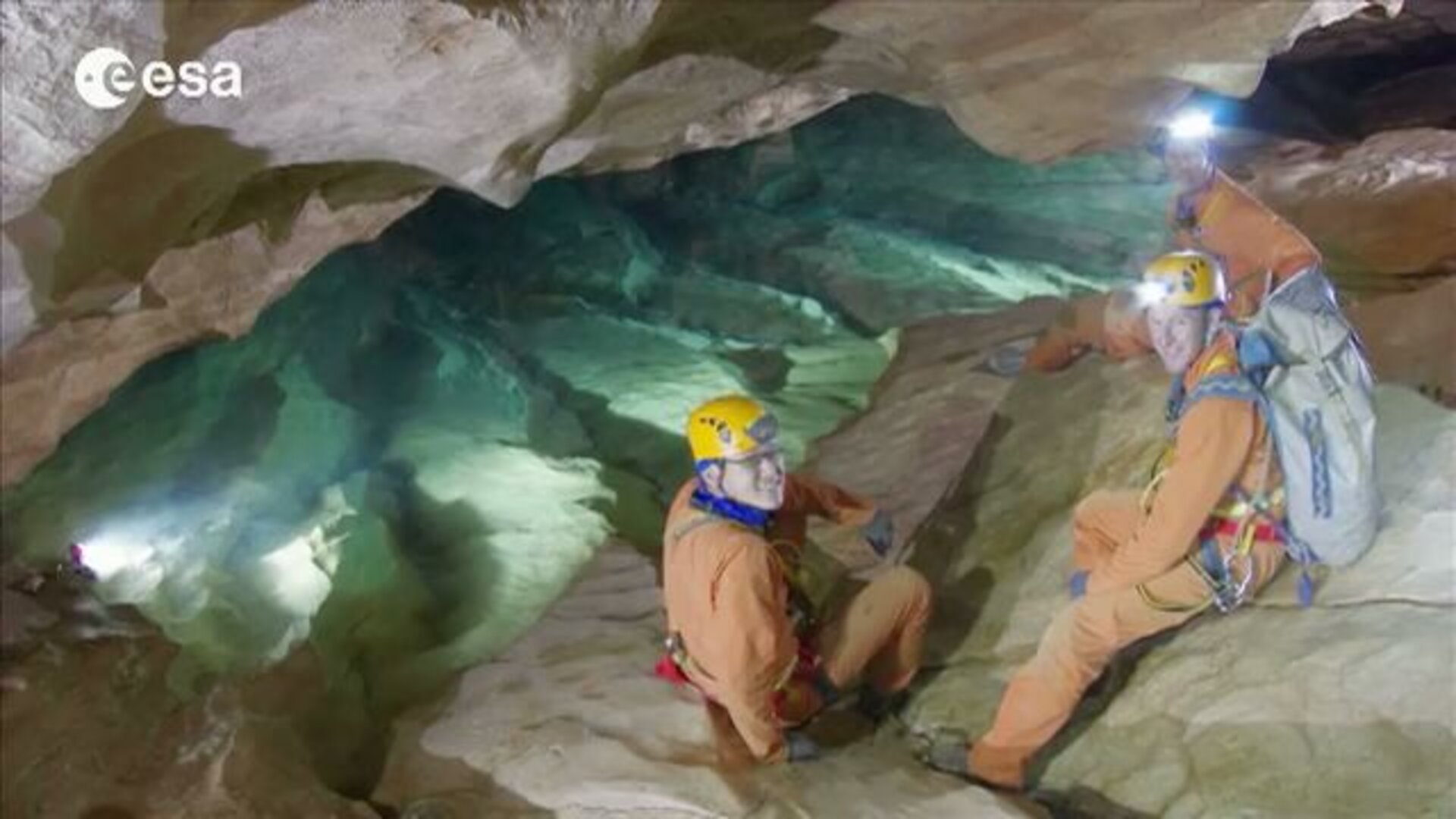
Access the video
Space-like conditions
“Even for astronauts, life in the dark, cool, humid underground environment can be a completely new situation with interesting psychological and logistical problems,” notes Loredana Bessone, astronaut trainer at the European Astronaut Centre in Cologne, Germany.
Real exploration

“The cave environment is isolated from the outside world. There is confinement, minimal privacy, technical challenges and limited equipment and supplies for hygiene and comfort – just like in space.”
This is not the first time she has taken a training team into the caves, but this was the first with such an international team: ESA’s Tim Peake and Thomas Pesquet were joined by Randolph Bresnik from NASA, Norishige Kanai from Japan and Sergey Ryzhikov from Russia.
Action-packed to the last moment
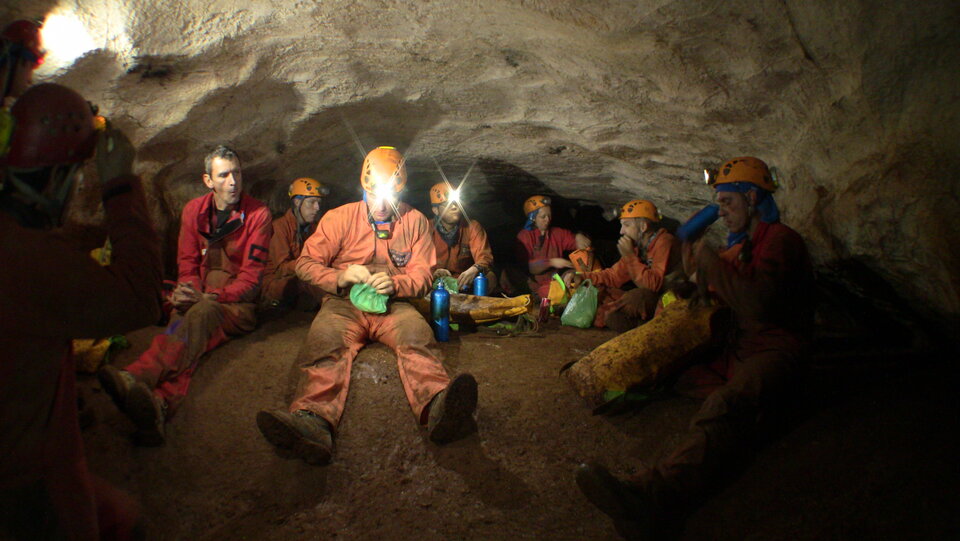
“It was a rare opportunity to experience problems encountered during a space mission in a training environment,” says Tim.
“Our mission required teamwork and working through problems as a small international team where different cultures and primary languages require consideration.”
Thomas praises the team and good organisation: “Everyone was focused and we had a great time together.”
“Being in a cave was something like mountaineering, but much more challenging – with isolation, darkness and the need for full situational awareness to avoid snagging ourselves on sharp rocks or crevices.”
Real exploration
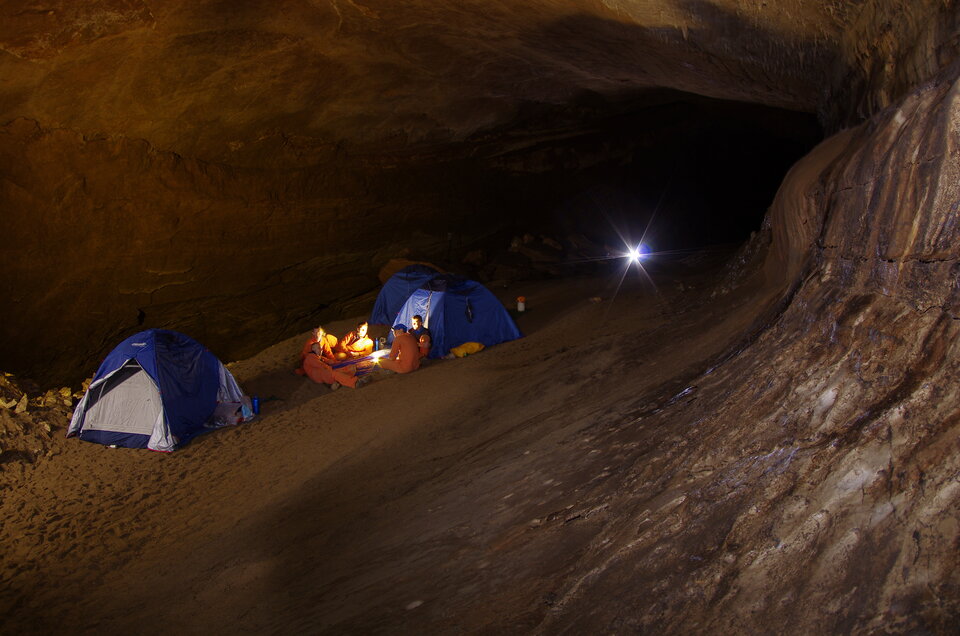
The daily routine was organised around timelines, as on a space mission. Planning sessions were held twice a day through a dedicated telephone line to a support team at the cave’s mouth.
“The most exciting moments were the times when we were in unknown passages and had to make decisions on how to proceed and how to organise ourselves,” explains Thomas.
“We encountered underground lakes, had to decide if we used ropes or an inflatable boat … should we continue together or divide into small groups … and so on.”
Their scientific work included mapping, photography, monitoring air flow, temperature and humidity, and taking geological and microbiological samples.
Action-packed to the last moment
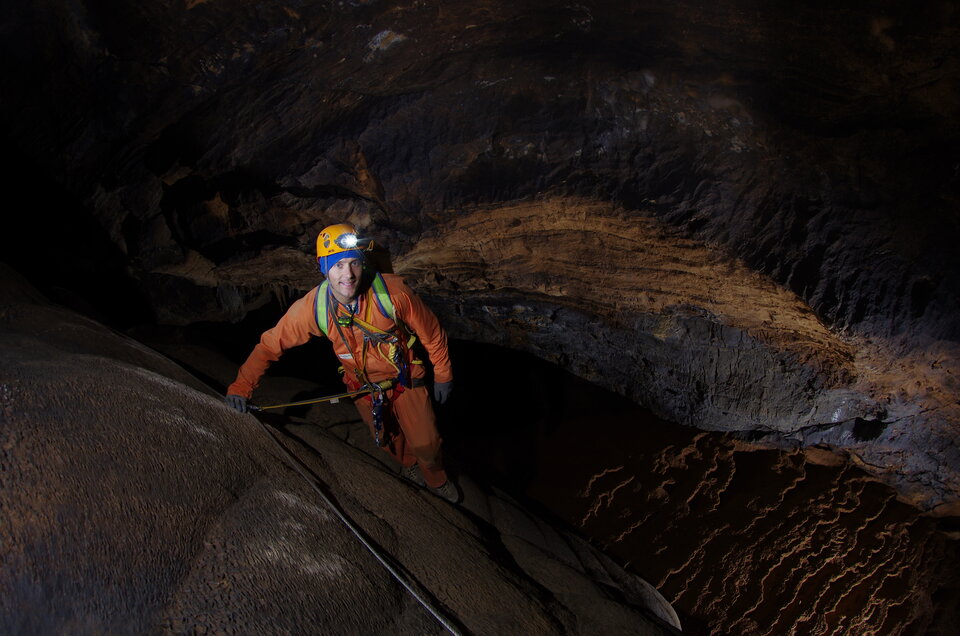
“It took about five hours to come back from the cave to our campsite, requiring technical caving and a support team to help us,” notes Tim. “We really had a feeling of being far away.”
“When we came back, everything on the surface looked strange: the blue of the sky and other colours looked painted and all the smells of nature were so strong,” remembers Thomas. “The real world felt all-too real, exaggerated.”
At the end of the mission, the crew prepared a report, went through a final debriefing and gave a handover presentation that will be used for the next ‘cavenauts’.
Tim summarised the whole experience: “From my point of view, the most valuable part was the personal friendships that were forged between the participants.”
CAVES has been designed and developed jointly by ESA and Advanced Training Solutions.



